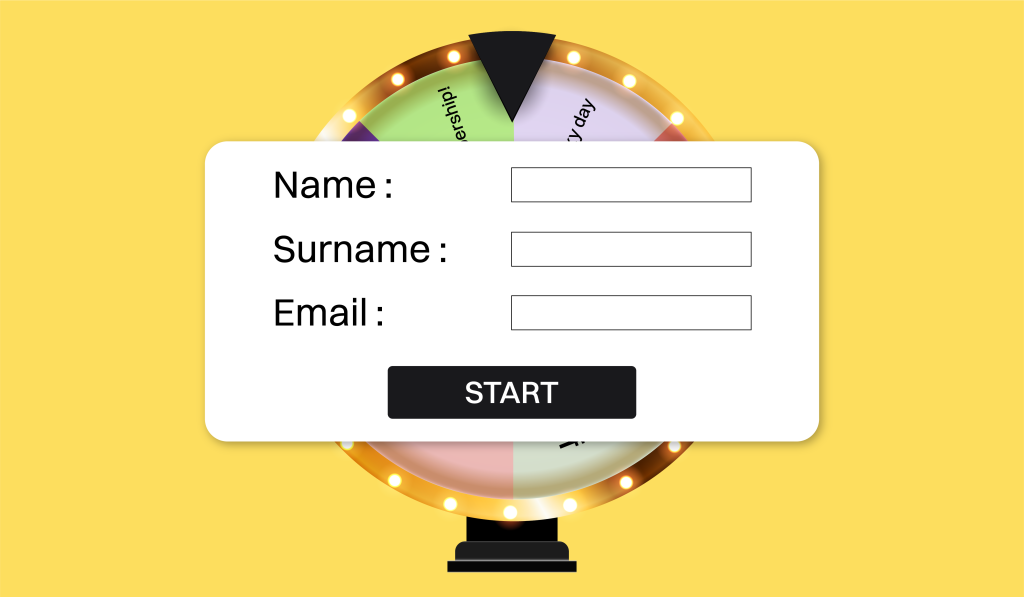Our websites use cookies. By continuing, we assume your permission to deploy cookies as detailed in our Privacy Policy.
How Behavioural Targeting Works: Explained with Examples
Over the decades, traditional customer segmentation strategies have given way to a multifaceted approach that transcends mere demographic attributes.
Marketers now wield advanced tools and technologies that provide a treasure trove of behavioural data and insights. This data delves deep into customer behaviour patterns, offering invaluable insights into preferences and actions.
Behavioural targeting, the focus of this article, empowers marketers to harness and interpret this data, enabling a profound understanding of their customer base. Through this article, we will explore how behavioural targeting works, complete with illuminating examples.
What is Behavioural Targeting?
Behavioural targeting is a marketing strategy used commonly in digital marketing and advertising. The method leverages data relevant to users’ browsing habits and behaviours, such as the frequency and duration of visits, search terms used, pages visited, and interactions with ads and buttons.
Why Behavioural Targeting is Important
The short answer is that a customer segmentation strategy without the appropriate behavioural targeting strategy is just grouping a bunch of people with some common traits.
1. Precision and Personalisation
Behavioural targeting allows marketers to move beyond broad demographics and focus on individual users’ specific actions and interests.
By analysing a user’s online behaviour, such as browsing history, search queries, and interactions with your website or app, you can precisely tailor your marketing messages.
Let’s say you’re selling outdoor gear.
With behavioural targeting, you can differentiate between a casual browser and a potential customer who has repeatedly searched for hiking boots, read camping equipment reviews, and added items to their shopping cart.
By recognising these behavioural cues, you can personalise recommendations and promotional offers, significantly increasing the chances of converting the visitor into a customer.
Learn more about the Types of Online Customers and How to Convert Them.
2. Improved User Experience
When your marketing messages align with a user’s interests and preferences, it creates a more enjoyable and relevant interaction. This not only improves the chances of conversion but also builds loyalty.
For instance, if a visitor to your travel booking website frequently searches for flights to tropical destinations, sending them exclusive deals on beach resorts and travel packages will demonstrate that you understand their desires. This, in turn, builds trust and makes them more likely to choose your platform when booking their next vacation.
3. Efficient Resource Allocation
One of the most significant advantages of behavioural targeting is its ability to optimise marketing budgets.
You can allocate your resources more efficiently by focusing your efforts on users who have demonstrated interest in your products or services. This means you’re less likely to waste valuable ad spend on disinterested audiences, resulting in a higher return on investment (ROI).
Imagine yourself as a fashion eCommerce store selling a wide apparel range.
Without behavioural targeting, you might run generic ads to a broad audience, hoping to catch the attention of potential buyers.
However, by analysing user behaviour and identifying those who frequently visit the “Women’s Activewear” section, you can focus your ad budget towards this specific audience, increasing the likelihood of generating sales.
Types of Behavioural Targeting
1. On-Site Behavioural Targeting
As the name suggests, on-site behavioural targeting happens within a particular website or app and is generally used for website/app personalisation.
It involves collecting data about how visitors interact with a platform’s content, such as the pages they visit, the products they view, the time spent on each page, and even their mouse movements and clicks.
Ads and the relevant content are presented to the users aligned with their previous activity on that site. By doing this, brands can obtain higher user engagement, lower cart abandonment rates and longer time-spent on site/app.
2. Network Behavioural Targeting
Network behavioural targeting expands its scope beyond a single website. It involves tracking a user’s online behaviour across multiple websites and platforms, often with the help of third-party data providers or advertising networks.
By aggregating data from various sources, advertisers can create a more comprehensive user profile, enabling them to deliver highly personalised ads and content to individuals as they traverse the internet.
However, recent developments like the introduction of GA4 and increased privacy regulations, like Apple’s App Tracking Transparency (ATT) framework and GDPR, have placed limitations on cross-app and cross-website tracking.
This doesn’t mean network behavioural targeting is dead and should be buried, though. It just means marketers should adapt by leveraging GA4 for user-centric data, focusing on first-party data, diversifying targeting methods, and prioritising compliance and transparency to navigate this changing landscape effectively.
How Behavioural Targeting Works
Behavioural targeting is a sophisticated method of tailoring content and advertisements to individual visitors’ preferences and behaviours.
1. Data Collection and Analysis
At the core of behavioural targeting lies the meticulous gathering and analysis of user data.
The data collection step involves systematically collecting various user interactions, such as browsing history, search queries, and online purchases. Subsequently, advanced analytics tools dissect this data, extracting valuable insights and patterns that reveal user preferences, interests, and behaviours.
Due to the latest restrictions on third-party cookies, as aforementioned, marketers are now focusing their attention on first-party data collection.

2. Segmentation
With a treasure trove of data at hand, marketers employ customer segmentation techniques to categorise users into distinct groups based on their shared characteristics and behaviours.
This process allows for the creation of user profiles or segments that reflect specific interests, demographics, or online activities. By segmenting their audience, marketers can tailor their messaging and advertisements to each group’s unique preferences and needs.
3. Data Application
The culmination of behavioural targeting occurs in the application phase. Here, the insights gained from data collection and segmentation are put to work.
Marketers strategically design and deliver personalised content, advertisements, and offers to individuals within each segment. This level of personalisation ensures that users receive messages that resonate with their interests, ultimately leading to more meaningful interactions and higher conversion rates.
Jumpstart Your Behavioural Targeting Journey
Harnessing the power of user data can be a game-changer for your marketing efforts. But where do you begin?
Segmentify: Your Path to Effective Behavioural Targeting
Segmentify is a leading solution that empowers businesses of all sizes to supercharge their marketing strategies through data-driven insights and personalised engagement. Here’s how you can get started:
- Data collection made simple: Segmentify’s user-friendly platform streamlines the process of data collection and analysis. With its intuitive tools, you can effortlessly gather and interpret user interactions, gaining a profound understanding of your audience’s behaviours and preferences.
- Effortless segmentation: Creating precise audience segments is a breeze with Segmentify. The platform’s segmentation capabilities enable you to categorise your users based on various criteria, ensuring your messaging is finely tailored to each group’s interests and needs.
- Personalised campaigns: Once you’ve segmented your audience, Segmentify empowers you to craft highly personalised campaigns across multiple channels, including email, website, and more. You can significantly enhance user engagement and boost conversion rates by delivering content and offers that resonate with individual users.
- In-depth analytics: With Segmentify’s robust analytics tool Segmentify Analytics, you can track the performance of your behavioural targeting campaigns with precision. Monitor what’s working and what needs improvement, enabling you to optimise your strategies and achieve even better results.
Incorporate Segmentify into your marketing toolkit, and you’ll be on the path to creating impactful, data-driven behavioural targeting campaigns that resonate with your audience.
Don’t miss out on the opportunity to connect with prospects, keep your customers engaged, and elevate your marketing efforts to new heights. Contact Segmentify today and experience the transformative power of behavioural targeting for yourself. Your audience is waiting to be engaged in a way that’s both meaningful and effective.
Editor’s Note: This article was originally published on November 19, 2021, and was updated for accuracy and comprehensiveness on September 13, 2023.





